The sea breathes in and out. I watch its gradual progression up the beach – will it reach that lower seaweed strand? Is the height of the tides increasing or lessening at the moment? What is the phase of the moon? Being back on an island reminds me that I have lost touch with some of the fundamentals of nature. Such as how early in the morning the growing light creeps around the campervan blinds and wakes me. The world outside is fresh and new – why am I lazing in bed drinking tea?
Sand under my toes again – so long since I have felt that. The chill on the ankles of a shallow sea, the beach only gently shelving. Water mid thigh, deep enough to give myself to it and swim. Like molten glass it buckles in a ridge in front of my face as my breast stroke kick propels me forward. Each corrugation in the surface reflects alternating strips of sky, grass and rock. I shift the world as I float forwards, fracturing it into shards of light with each sweep of my arms.
A warm wind whipping over the summit ridge keeps the midges at bay. The ochre hillside plunges down to bright green fields and dark trees fringing a sea that reflects the cornflower blue sky. An undulating, sometimes serrated, massif of hazy Highlands bound the eastern horizon, ranging from Ben Nevis to Ben Cruachan. Bulky Morvern divides the channel, with the Sound of Mull below and paler Loch Linhe running away into the distance. The long, thin Isle of Lismore angles across the gap between them, like a log jammed in a pool.
The heath vegetation is dried to a crisp by weeks of drought. Small pools on the ridge have evaporated, their peaty banks cracked. A few small cumulus are growing, casting cool shadows over the hillsides. I meet the hard track that snakes back down to my start point and its sharp stones feel alien under my boots. It is easier to cut the corner and jog across the unusually dry bog, peppered with heath spotted-orchids and cotton grass. Dozens of small heath butterflies flit from my boots.
Bushy trees line the road. The lusty leaves of pea-green hazels flap in the breeze. Soft but solid walls of naturally coppiced growth on either side – a beautiful avenue snaking across the rocky moorland. How different the landscape is to my first visit here in 1980, when you could see for miles across sheep-bitten hillsides. We rattle over a cattle grid and enter another deer fenced area where the native woodland is regenerating. Some birch, rowan, oak, hazel, willow, Scots pine have been planted in barer areas.
I scan the cliff-face at the back of the raised beach. It’s not obvious at first, with a clump of green nettles and brambles shielding the black hole. But there it is, yet another whisky cave – a hidden location where crofters could distill illegal whisky out of sight of excisemen. I weave between yellow flag irises and across squelchy ground. Then duck into the portal, dodging drops of water trickling from above and forming a partial curtain across its mouth. The roof rises inside and I can easily stand. As my eyes adjust to the dimness I step further in over rocks to a built platform of stone with a hollow centre – this must be where the still was situated with a fire made in the pit below.
The cave goes back a long way and I cautiously explore further in, one hand above my head in case I miss rocks protruding from its lowering roof. What life has this space seen? Long before distilling was invented humans must have sheltered here, lit fires and eaten animals now extinct on this island. I shiver, feel I am treading on others’ bones. Time to get out into the light.
Buffeting, noisy, mind numbing. Whichever way I walk along a coast the increasingly powerful wind seems to be in my face. It rips off the peaked cap I’ve been wearing to shield my eyes from the sun and whisks it into a clump of bog myrtle. It drags at the map in my hand and I fold the A4 sheet smaller in its plastic bag. Maybe when I go down these rock steps and over that stile in a wall below it will seem less fierce? But down on the salt marsh fringing the shore the gale is just as persistent. I can’t wait to turn inland into the shelter of scrubby birch.
Here on the woodland edge is a wind-bent oak, its crown stag-headed and its long side branches all leaning away from the southwest and the prevailing wind. Each horizontal limb has a band of green along its crest. I look closer. Not ferns but linear gardens of sprouting oak leaves – what I’ve learnt to name as epicormic growth. Perhaps the tree is making up for the savage conditions it faces on its outer edge by nurturing more photosynthesis in the shelter of its own microclimate.
Another standing stone interrupts the smooth sweep of well-grazed pasture. Like a vertical compass point, its weathered surfaces indicate direction with different colonies of lichens on the wetter and shadier sides. Crustose off-white patches seem determined to merge together, but darker ones intervene. The leafy pale green species it wears as a topknot is dried to a crisp.
What did you signify to the people who erected you? Did you serve as a beacon or a memorial? Are human remains buried within the ring of kerb stones that surround you? If I listen carefully, can I hear back in time or space?
I am the first to spot the white-tailed eagle after scanning the wall of mature Sitka spruce with binoculars. A bit to the right of that buoy and about a quarter of the way down from the tree tops. Pale brown against the bottle green, with a flash of white showing from its tail, it sits there, lazy and unmoving all the time we watch it. Someone else comes into the hide. “Did you see the otter?”, he says. Suddenly all lenses are trained on the shore below us.
The seaweed floating just beyond the rocks is disturbed by a sinuous shape, like a whale breaching, but faster and more fluid. Twenty seconds later the head surfaces and swims along before another dive. Soon the big dog otter emerges onto nearby rocks and flows over them, unceasingly absorbed in his hunt. Never still, his shape is in constant flux, leaving a series of momentary images before he moves out of sight.
A metallic grinding sound as the ferry grounds its ramp on the slipway. More mechanical noise as the ramp unfolds and the engine positions the ship to the satisfaction of the skipper. In no time we are waved on board. Thump, thump as the front and rear axles bump onto the ramp. Parked behind a heavily loaded timber lorry then asked to reverse so that its weight is better balanced. What an art to loading and running this service with ever changing wind and tides! Up steps to the viewing deck, we are already well across to Lochaline with forested Fishnish receding behind us. Goodbye Mull, until the next time.
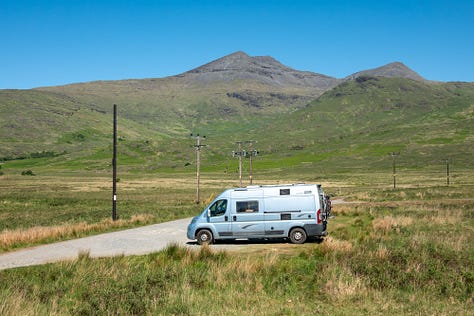
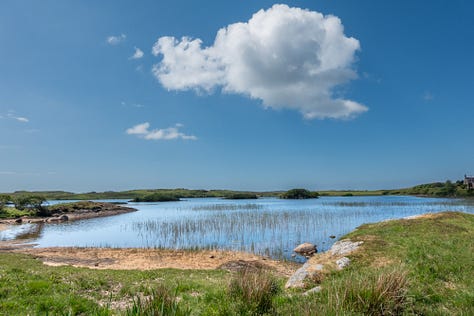
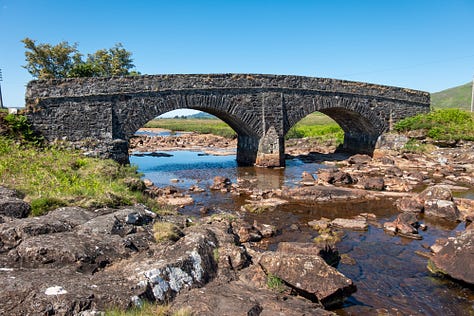
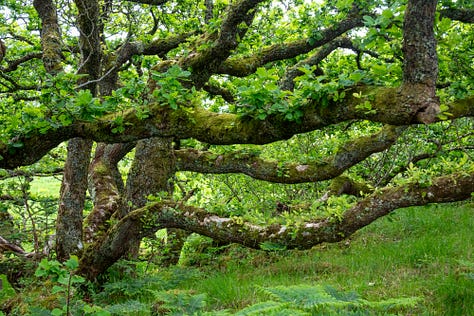
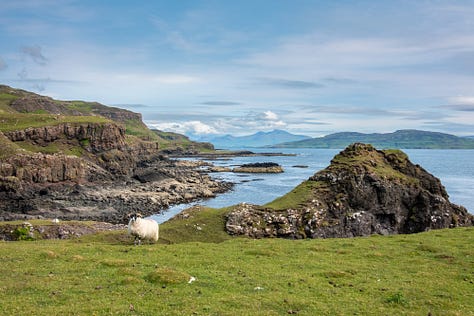
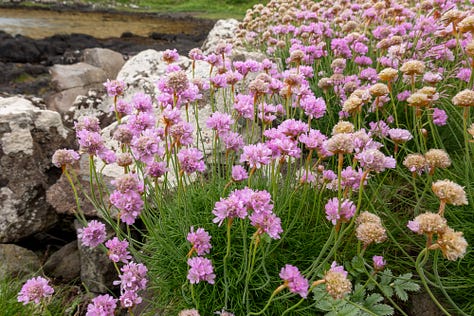
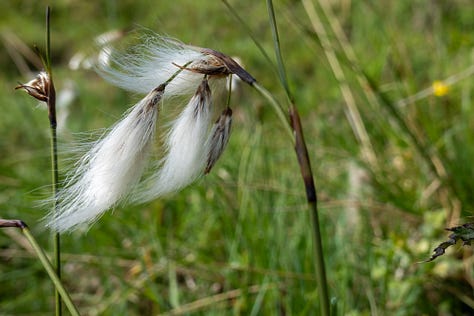
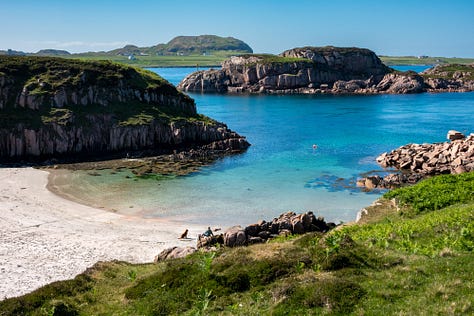
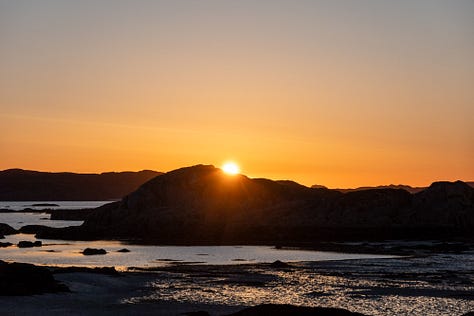


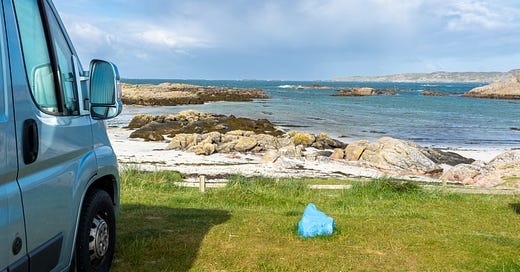











Beautiful words and photos - I can so imagine being there.
I was a little disappointed to hear you already have midges - naively I hoped they would't appear until later in the year, lol :-)
I loved reading this. And the photos are stunning. Scotland has my heart, especially the Hebrides. I haven’t been to Mull (yet!) but it’s on the list…and may have just found its way to the top now!
Beautiful.